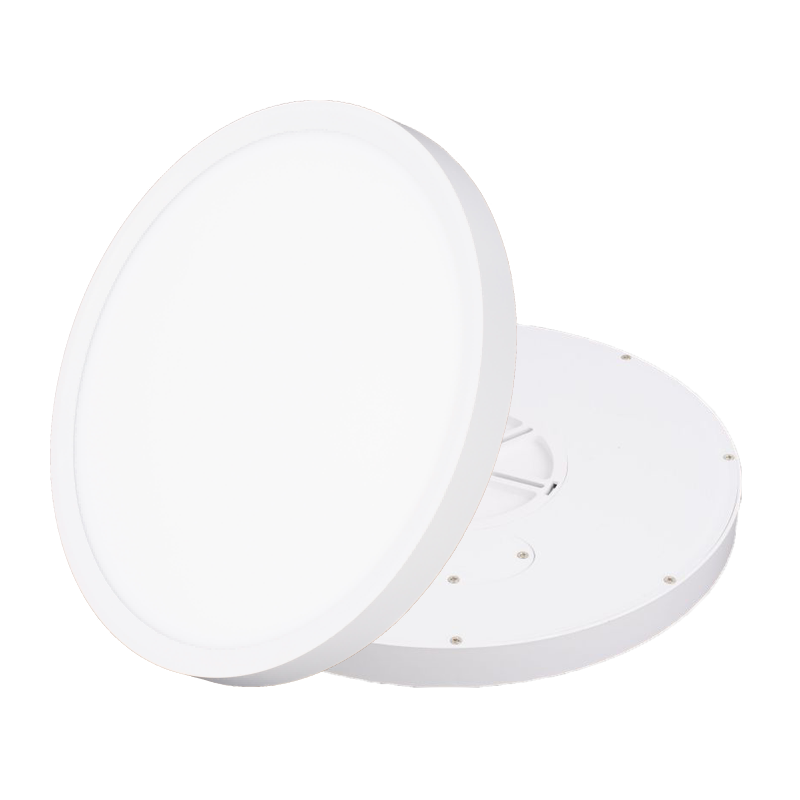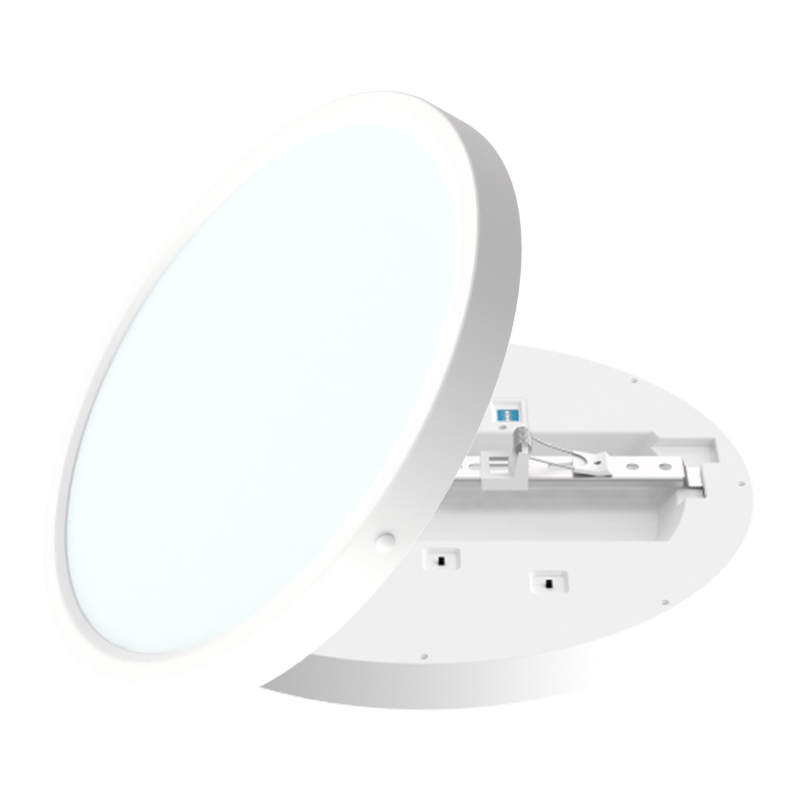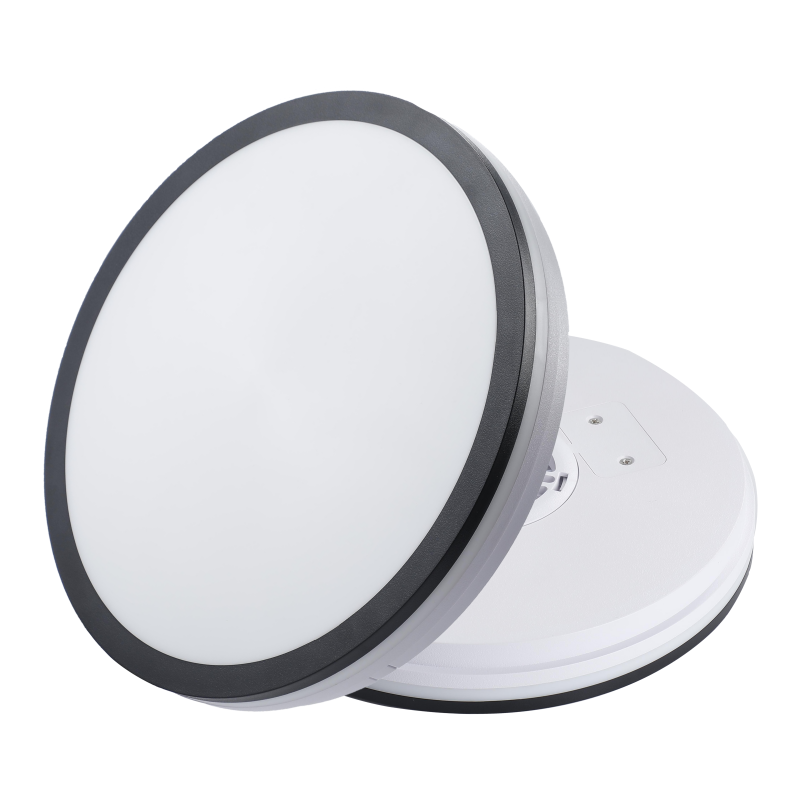In contemporary home decor, lighting design is no longer simply about illuminating a space; it's a crucial tool for creating atmosphere and enhancing quality. Downlights and spotlights, two key components of modern lighting systems, share a similar appearance but possess distinct optical properties and application scenarios. This battle between light and shadow is quietly transforming the way homes are illuminated.
Similar in appearance, distinct in essence
From the outside, both downlights and spotlights are recessed fixtures, blending seamlessly into the ceiling and maintaining a clean, clean look. This is the primary reason many consumers confuse the two. However, their internal structures and optical designs differ significantly.
Downlights typically utilize a diffuse reflector design, evenly distributing light through a frosted mask or specialized reflectors, creating soft, glare-free ambient lighting. This design makes downlights an ideal choice for basic lighting, providing even illumination throughout a space and eliminating dark corners.
In contrast, spotlights are precise "light snipers." Using a concentrating design, spotlights focus light onto specific areas or objects through precise optical lenses or reflectors. This makes them expert accent lighting, perfect for highlighting paintings, sculptures, or specific decorative elements, creating dramatic light and shadow effects.
Industry expert Zhang Gong explains, "Downlights are like the 'foundation' of a lighting system, while spotlights are the 'finishing touch.' Each performs its own function, complementing the other to create a complete lighting solution."
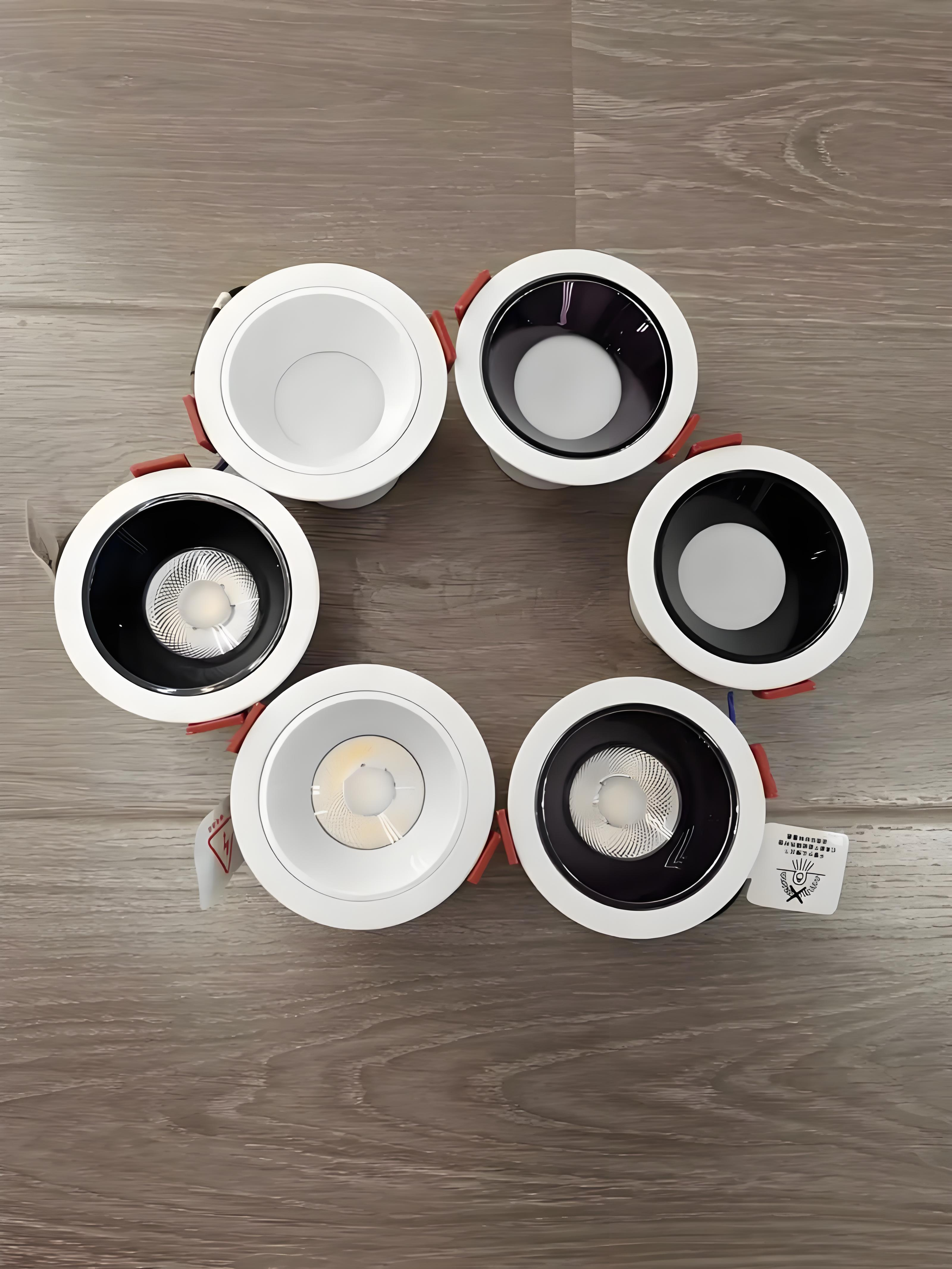
Technical Parameters: Uncovering the Essential Differences
To truly understand the difference between downlights and spotlights, we need to delve into the technical details. Beam angle is a key differentiator. Downlights typically have a wider beam angle, typically between 90 and 120 degrees, with some even reaching 180 degrees, enabling wide-ranging ambient lighting. Spotlights, on the other hand, typically have a narrower beam angle, ranging from 5 to 45 degrees, focusing on precise illumination.
In terms of power and luminous flux, downlights generally require higher power to illuminate an entire space. While spotlights may have lower power per lamp, their concentrated light provides higher illumination at the targeted spot.
The color rendering index (CRI) is another key difference. Because spotlights are often used for highlighting displays, they typically have higher CRI values (generally over 90), allowing for more faithful reproduction of object colors. Downlights, on the other hand, are used for ambient lighting, requiring a relatively lower CRI; a CRI of around 80 is generally sufficient.
Heat dissipation design also differs. Because spotlights provide concentrated light, they generate more heat per unit area, requiring a more efficient heat dissipation system. Modern, high-quality spotlights typically utilize aluminum alloy heat sinks and specialized thermal conductivity designs to ensure that overheating doesn't affect performance and lifespan over extended use.
Application Scenario: Each Shows Its Strengths
In the home, downlights and spotlights each have their own unique applications.
In living room lighting, downlights often serve as the primary lighting source, evenly distributed across the ceiling, providing a comfortable, basic illumination. Spotlights, on the other hand, can be used to highlight a TV wall, decorative paintings, or bookshelves, creating a focal point. This combination avoids the harsh shadows and glare caused by a single main light source while enhancing the sense of depth in the space.
In the kitchen, downlights provide overall illumination of the worktop, ensuring safety during cooking. Installing low-angle spotlights below wall cabinets can precisely illuminate the cutting area, preventing shadows from obstructing the light.
Bedroom lighting is more about creating an atmosphere. Downlights provide soft, overall illumination, perfect for resting and reading. Spotlights, on the other hand, can be used to highlight wardrobe interiors or wall art, adding a sense of quality to the space.
This distinction is even more pronounced in commercial spaces. Museums and galleries rely on precise spotlighting to highlight exhibits, while offices and supermarkets use downlights to provide even task lighting. Lighting designer Li Ming explains, "Good lighting design is like a concert. Downlights are the background chords, setting the tone; spotlights are the solo instruments, highlighting key points. Only when these two work in harmony can a perfect lighting symphony be created."
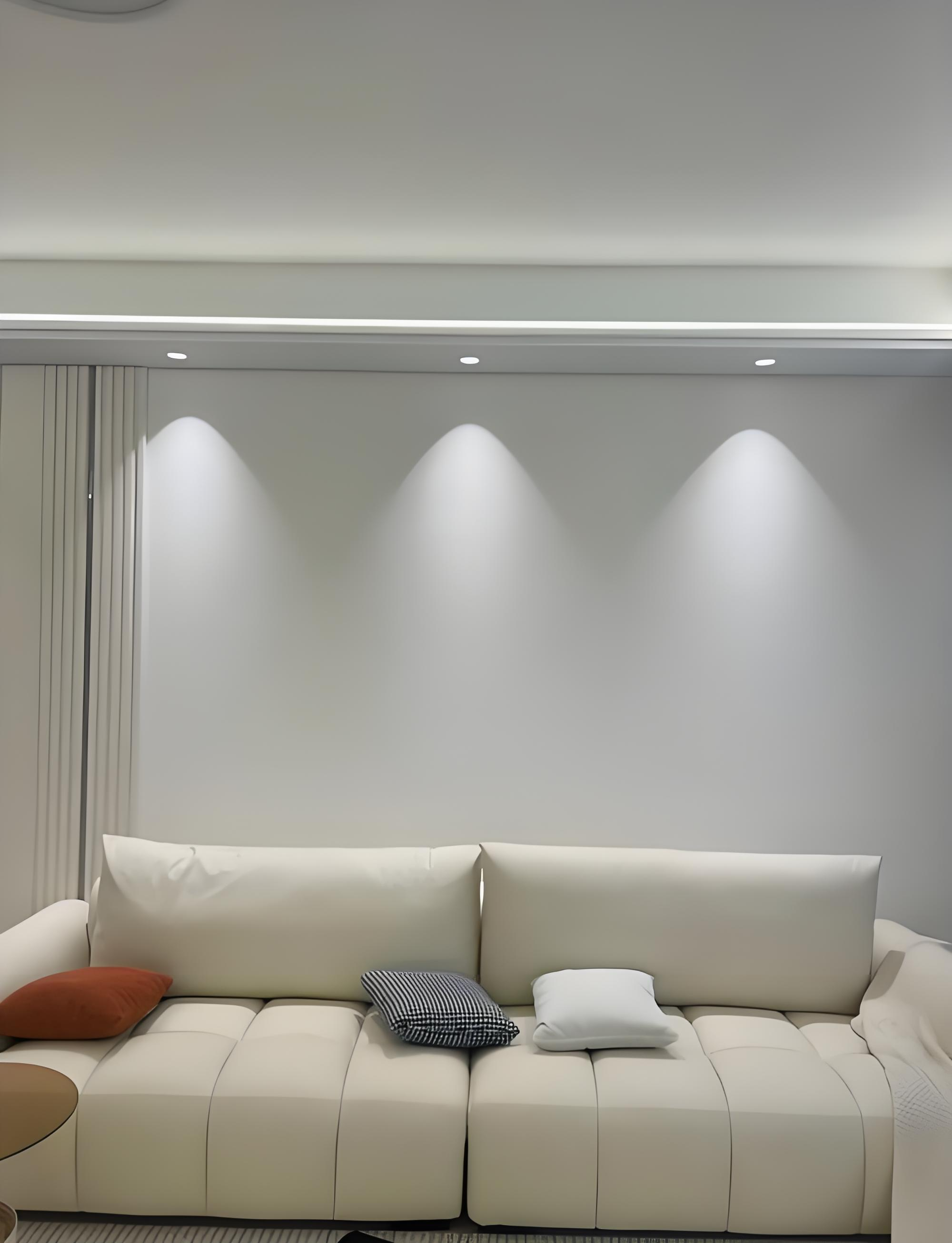
Buying Guide: Avoiding Common Mistakes
With so many products on the market, how can consumers make the right choice? Here are some professional tips:
First, clarify your needs. Plan the function of each space and the desired atmosphere. Determine which areas require overall lighting and which items or areas require prominent display.
Consider the fixture's adjustability. Fixed downlights are relatively inexpensive and suitable for basic lighting of large areas. Adjustable spotlights offer greater flexibility, allowing you to adjust the direction of illumination as needed, making them ideal for illuminating key areas.
Focus on quality indicators. Don't just look at price and appearance; consider internal qualities such as color rendering index, color temperature consistency, heat dissipation design, and light decay curves. While high-quality lamps may require a higher initial investment, they are more energy-efficient and durable in the long run.
Advances in LED technology have made modern downlights and spotlights more energy-efficient and efficient. When choosing, pay attention to the luminous efficacy (lm/W); a higher value indicates greater energy efficiency. Also, choose the appropriate color temperature: warm white light between 2700-3000K is suitable for living spaces, creating a warm atmosphere; cool white light above 4000K is suitable for work areas, enhancing alertness and productivity.
Compatibility with smart control systems is also worth considering. Modern smart downlights and spotlights can be integrated into home automation systems, enabling dimming, color adjustment, group control, and scene mode settings, greatly improving convenience and energy efficiency.
Industry Trend: Convergence and Innovation
With technological advances, the boundaries between downlights and spotlights are blurring. Innovative products continue to emerge, highlighting how to switch between wide-angle and focused lighting within the same fixture to meet diverse lighting needs.
Healthy lighting is a new trend. Research shows that inappropriate lighting can affect human circadian rhythms and visual health. Manufacturers are beginning to launch "human-centric lighting" products that automatically adjust color temperature and brightness based on time of day, mimicking the changes in natural light and promoting a healthier lifestyle.
Miniaturization is another development trend. The emergence of ultra-thin downlights and micro spotlights significantly reduces installation depth requirements, enabling professional lighting effects even in confined spaces where traditional recessed lighting is unsuitable.
Energy efficiency continues to improve. The latest generation of LED chips and intelligent driver technology make downlights and spotlights more energy-efficient than traditional products by over 50%, while also offering longer lifespans and lower maintenance costs.
Demand for personalized customization is growing. Manufacturers offer a variety of exterior styles, frame colors, and faceplate options, enabling lamps to not only provide functional lighting but also serve as decorative elements to suit diverse interior design styles.
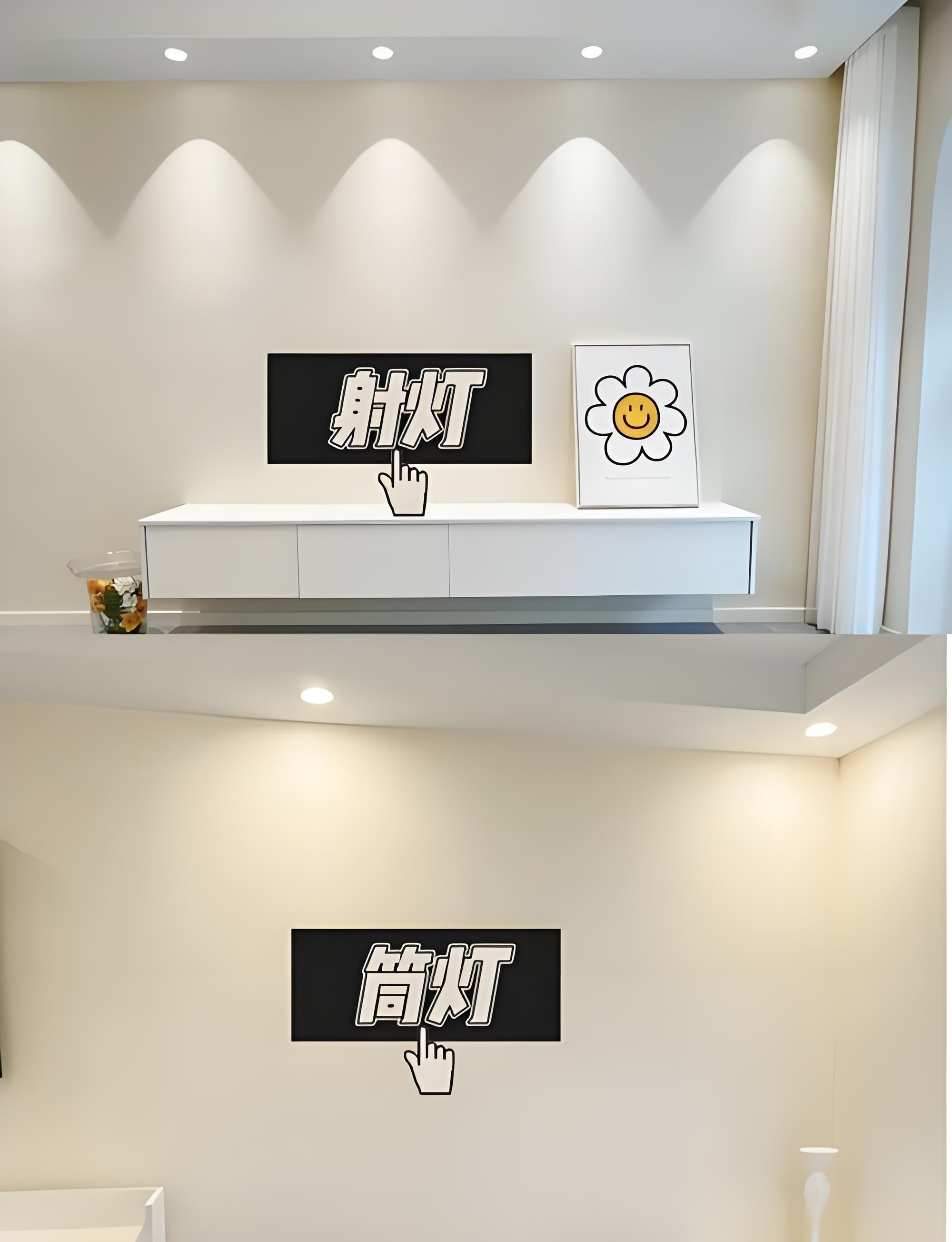
Expert Opinion: A Rational Approach to Lighting Selection
Professor Chen of the Institute of Architectural Lighting and Environment at Tsinghua University noted, "Lighting design should follow the three-tiered principle of 'overall-local-accent'. Downlights and spotlights are not in competition, but rather complementary. Proper matching and layout are more important than simply choosing the right fixture."
The Lighting Branch of the China Building Decoration Association recommends that consumers consult a professional lighting designer before renovating: "Many people underestimate the importance of professional lighting design. A good lighting solution not only improves quality of life but also saves energy and reduces the cost of subsequent renovations."
Interior designer Wang Jing shared her experience: "I usually advise clients to choose high-quality, reliable downlights for basic lighting, and add adjustable spotlights in key areas. This combination keeps the budget under control while ensuring effectiveness. The addition of intelligent control systems makes this combination even more flexible and practical."
Conclusion
The difference between downlights and spotlights is far more complex than it seems. In this game of light and shadow, there are no losers, only the perfect combination and balance. With technological innovation and evolving application concepts, these two types of lighting will continue to evolve, creating a more comfortable, healthy, and beautiful lighting environment for humanity.
Wise consumers should transcend the binary choice mindset and instead organically combine downlights and spotlights based on spatial functionality, personal needs, and aesthetic preferences, creating a lighting solution that is both practical and artistic. In modern homes where light and shadow intertwine, these two types of lighting each play their own role, together demonstrating the exquisite art of lighting design.

